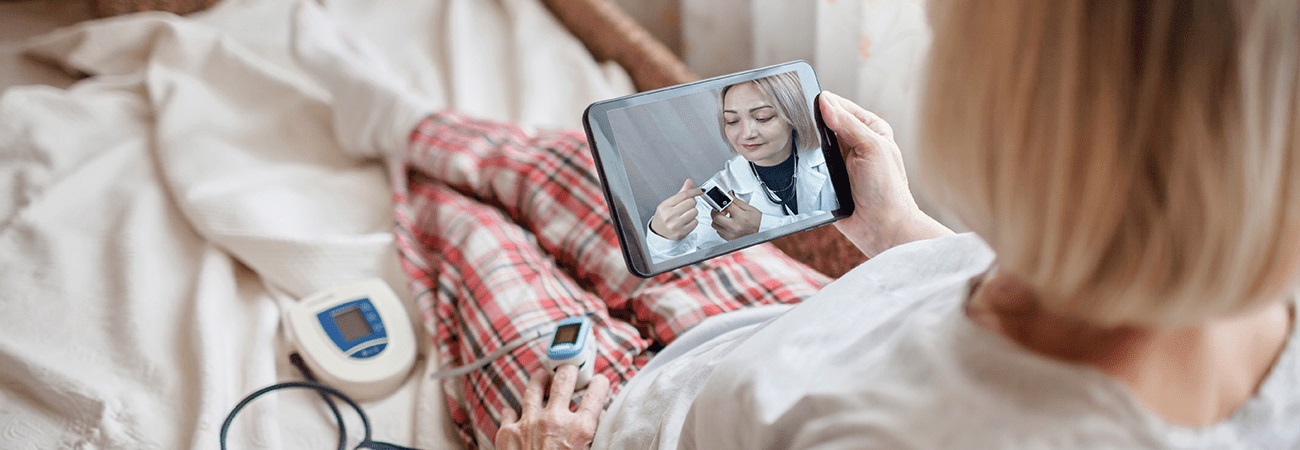
Executives witness RPM’s 73% positive ROI, improving care and satisfaction. A survey of 141 healthcare leaders highlights RPM’s impact on chronic diseases—hypertension, diabetes, and more—bolstering patient outcomes (94%) and care (76%). Provider partnerships prove crucial (85% retention). CCM, too, yields revenue spikes (78%). Plans: RPM and CCM budget hikes (46% and 50% respectively), emphasizing EHR integration’s necessity (74%). While RPM aids hypertension care, high-RPM practices see a $274 rise in spending. Conclusion: RPM and CCM programs deliver tangible ROI, enhancing care quality, and patient engagement, steering healthcare toward optimal outcomes and financial stability.
Amidst healthcare’s RPM and CCM exploration, a survey discloses significant dividends. The study encompasses 141 healthcare executives, unveiling RPM’s (73% ROI) and CCM’s (78% revenue surge) pivotal roles. Chronic diseases, like hypertension and diabetes, bear the brunt, witnessing heightened patient outcomes (94%) and satisfaction (76%). Provider partnerships emerge triumphant (85% retention). Future strategies emphasize budget amplification (46% RPM, 50% CCM) and the imperative nature of EHR integration (74%). However, while RPM aids hypertension care, spending surges ($274 increase) in high-RPM practices, urging a closer examination.
Healthcare executives are witnessing significant returns on their investment in Remote Patient Monitoring (RPM) programs, with a substantial majority reporting positive outcomes, according to a recent survey commissioned by MD Revolution and conducted by Sage Growth Partners in May 2023.
In the survey encompassing 141 healthcare executives, including representatives from health systems, physician practices, and federally qualified health centers (FQHCs), findings showcased the impactful role of RPM programs, particularly for chronic disease management. Hypertension, diabetes, heart conditions, chronic obstructive pulmonary disease, mental health conditions, and surgical recovery were among the primary focus areas for these programs.
The survey revealed that a remarkable 76 percent of respondents acknowledged the positive influence of RPM programs on patient care, while an equally substantial 67 percent highlighted a significant boost in patient satisfaction. Moreover, Chronic Care Management (CCM) programs were similarly well-regarded, with 79 percent citing their role in enhancing patient care and 71 percent reporting increased patient satisfaction.
Provider-vendor partnerships were noted as integral to the success of RPM and CCM programs, with an overwhelming 85 percent of respondents expressing reluctance to switch partners. The primary motivations behind implementing RPM programs were to improve patient outcomes (44 percent), decrease hospital readmissions (42 percent), and lower the overall cost of care delivery (31 percent).
Importantly, an impressive 94 percent of respondents affirmed that RPM programs have notably improved patient outcomes, while an encouraging 73 percent confirmed these programs delivered a positive Return on Investment (ROI). Enhanced care plan compliance and engagement (63 percent) and improved medication adherence (58 percent) were identified as pivotal factors contributing to the financial gains associated with RPM.
The survey also shed light on the positive ROI linked to CCM programs, with 78 percent reporting additional revenue generation, marked by a substantial 29 percent increase in reimbursements post-implementation.
Looking toward the future, a significant majority of healthcare executives intend to either increase or maintain their budgets for RPM and CCM programs. Nearly half of the respondents plan to augment their RPM budget in 2024, with an equal percentage opting to sustain their current allocation, while a small fraction plans for a reduction. Likewise, a similar trend is observed for CCM budgets, where 50 percent anticipate an increase, 40 percent expect to maintain, and 9 percent foresee a decrease in budgetary allocation for the upcoming year.
The integration of RPM data with Electronic Health Record (EHR) systems emerged as a critical factor for executives aiming to launch or expand RPM and CCM initiatives. This integration is deemed essential for achieving pivotal metrics like enhancing care quality, facilitating data-driven care decisions, and meeting compliance requirements. Moreover, a significant 74 percent of survey respondents highlighted that the absence of RPM data integration with EHRs results in increased manual workload for administrative staff.
The survey findings gain significance as healthcare stakeholders endeavor to discern the value of RPM amidst its increasing adoption rates. A recent study exploring RPM’s impact on hypertension care and spending revealed positive outcomes in terms of improved medication fills and reduced emergency department visits and hospitalizations related to hypertension. However, it also noted a relative increase in hypertension-related spending of $274 per patient in high-RPM practices compared to low-RPM control practices.
RPM and CCM stand as transformative pillars in healthcare, manifesting significant returns and improved patient-centric outcomes. Survey insights—73% RPM ROI, 94% better patient outcomes—underscore their prowess in chronic disease management. Partnerships’ resilience (85% retention) and revenue spikes (78% CCM) augur well. Future strides, marked by budget escalations (46% RPM, 50% CCM) and EHR integration’s role (74%), hold promise. While RPM aids hypertension care, spending escalations ($274) in high-RPM setups warrant nuanced scrutiny. RPM and CCM, with strategic fine-tuning, will shape a resilient, patient-centric healthcare landscape.
